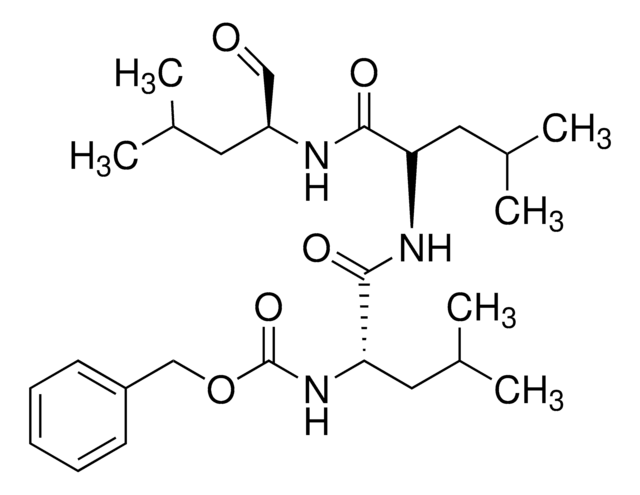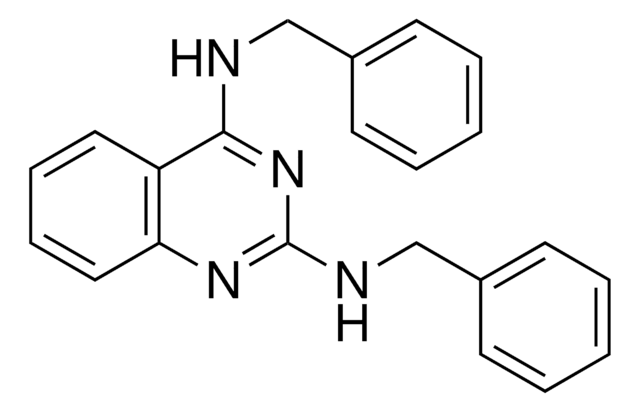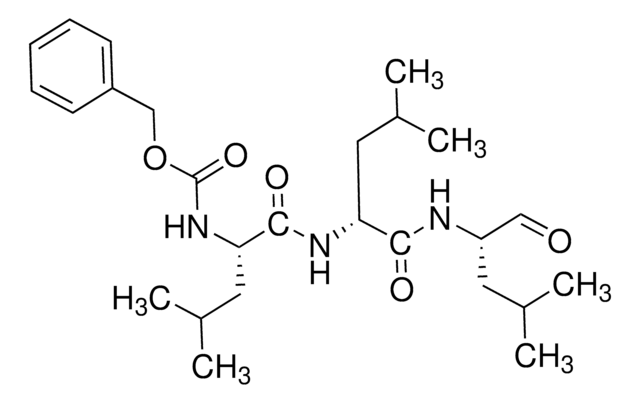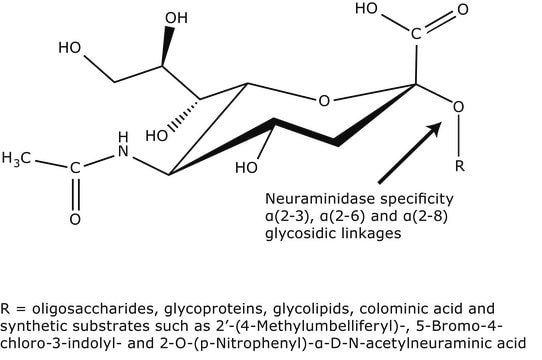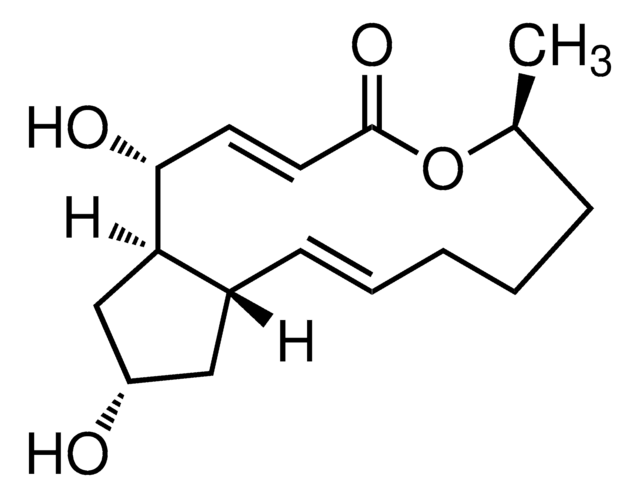E1286
Eeyarestatin I
≥98% (HPLC)
Synonim(y):
3-(4-Chlorophenyl)-4-[[[(4-chlorophenyl)amino]carbonyl]hydroxyamino]-5,5-dimethyl-2-oxo-1-imidazolidineacetic acid 2-[3-(5-nitro-2-furanyl)-2-propen-1-ylidene]hydrazide
About This Item
Polecane produkty
pochodzenie biologiczne
synthetic (organic)
Próba
≥98% (HPLC)
Postać
powder
warunki przechowywania
desiccated
rozpuszczalność
DMSO: 5 mg/mL
temp. przechowywania
2-8°C
InChI
1S/C27H25Cl2N7O7/c1-27(2)24(35(40)25(38)31-19-9-5-17(28)6-10-19)34(20-11-7-18(29)8-12-20)26(39)33(27)16-22(37)32-30-15-3-4-21-13-14-23(43-21)36(41)42/h3-15,24,40H,16H2,1-2H3,(H,31,38)(H,32,37)
Klucz InChI
JTUXTPWYZXWOIB-UHFFFAOYSA-N
Działania biochem./fizjol.
Inne uwagi
Kod klasy składowania
11 - Combustible Solids
Klasa zagrożenia wodnego (WGK)
WGK 3
Temperatura zapłonu (°F)
Not applicable
Temperatura zapłonu (°C)
Not applicable
Certyfikaty analizy (CoA)
Poszukaj Certyfikaty analizy (CoA), wpisując numer partii/serii produktów. Numery serii i partii można znaleźć na etykiecie produktu po słowach „seria” lub „partia”.
Masz już ten produkt?
Dokumenty związane z niedawno zakupionymi produktami zostały zamieszczone w Bibliotece dokumentów.
Klienci oglądali również te produkty
Nasz zespół naukowców ma doświadczenie we wszystkich obszarach badań, w tym w naukach przyrodniczych, materiałoznawstwie, syntezie chemicznej, chromatografii, analityce i wielu innych dziedzinach.
Skontaktuj się z zespołem ds. pomocy technicznej